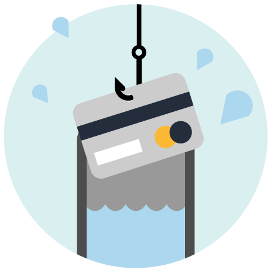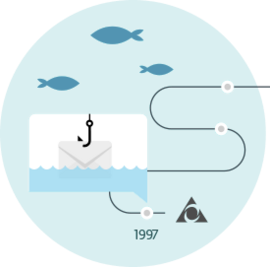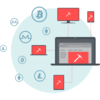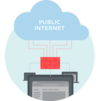What is phishing?
A technique used to that can be sold or misused by the attackers for nefarious purposes, such as , or .
Have you ever received an email, text or other form of electronic communication seemingly coming from a bank, or other popular online service, that requested you to “confirm” your account credentials, a credit card number or other sensitive information? If so, you already know what a common phishing attack looks like.
Origin of the term

How does phishing work?
Phishing has been around for years and in that time, attackers have developed a wide array of methods to target victims.
The most common phishing technique is to impersonate a bank or financial institution via email, to lure the victim either into completing a fake form in - or attached to - the email message, or to visit a webpage requesting entry of account details or login credentials.
Read more
How to recognize phishing
In the past, misspelled or misleading domain names were often used for this purpose. Today, attackers incorporate more sophisticated methods, making the links and fake pages closely resemble their legitimate counterparts.
An email or electronic message can contain official logos or other signs of a reputable organization and still come from phishers. Below are a few hints that can help you spot a phishing message.
Suspicious signs
How to protect yourself from phishing
To avoid a phishing bait, be aware of the above indicators by which phishing messages
commonly give themselves away. Follow these simple steps:
Be aware of new phishing techniques
Follow the media for phishing attack reports, as the attackers might come up with new techniques for luring users into a trap.
Don’t give away your personal info
Always be alert if an electronic message from a seemingly trustworthy entity ask for your credentials or other sensitive details.
Think twice before clicking
If a suspicious message provides a link or attachment, don’t click or download. Doing so might lead you to a malicious website or infect your device with malware.
Check your online accounts regularly
Even if you don’t suspect that someone is trying to steal your credentials, check your banking and other online accounts for suspicious activity. Just in case.
Use a reliable anti-phishing solution.
Apply these techniques and 'Enjoy Safer Technology'.
Notable examples
Systematic phishing started in the America Online (AOL) network in 1995. To steal legitimate account credentials, attackers contacted victims via AOL Instant Messenger (AIM), often pretending to be AOL employees verifying user passwords. The term “phishing” popped up on a Usenet newsgroup that focused on a tool called AOHell that automated this method, and the name stuck. After AOL introduced countermeasures in 1997, the attackers realized they could use the same technique in other parts of the online realm – and moved towards impersonating financial institutions.
Other past examples
ESET offers you an award-winning antivirus
ESET HOME Security Premium
Powerful, multilayered protection to encrypt sensitive data, manage passwords easily, secure online transactions and more. A user-friendly solution for enhanced privacy online. Secures Windows, macOS, Android, and iOS devices.










